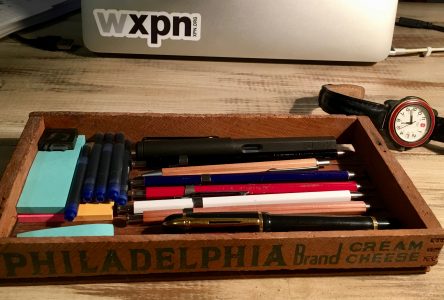Jenny Odell, in How to Do Nothing, has a multi-headed project that continuously expands upon itself throughout the book. Odell’s project is not to throw away time, but rather to spend time doing what current social expectations would consider “nothing.” These expectations, which perceive productiveness as progressing into the future, are contradicted by Odell who explains “To do nothing is to hold yourself still so that you can perceive what is already there” (23).
In a culture overrun by social media, people lose track of what is “real.” Algorithms control what we see, thereby having the ability to “affect the way we think about our offline selves and the places where we actually live” (xii). These algorithms, created by businessmen with a monetary motive, often focus on addictive features that rewire oneself. Odell argues this creates a lack of expression, not allowing people to live in the present. When this occurs, people lose the ability to have true conversations that allow one to truly learn and progress through listening. Odell explains that “doing nothing” could involve “an active process of listening that seeks out the effects of racial, environmental, and economic injustice and brings about real change” (23). While sitting and listening is often perceived as not productive and useless, it is in fact the key to bringing about the progress many of us seek. Odell is asking us to converse with others, rather than continuing to read the algorithmic driven social media. Odell believes, “Nothing is neither a luxury nor a waste of time, but rather a necessary part of meaningful thought” (4), making “doing nothing” a necessary part of insightful communication with others.
Although doing “nothing” can involve conversation and other people, many of the examples Odell uses within her book are while she is alone. In addition, Jenny Odell consistently brings about a concept of the importance of finding things that are “real,” and exemplifies the importance of this by enhancing examples, all of which occur in the “real world.” Odell includes crows, a rose garden, and Old Survivor to help elaborate her book, while also promoting nature. Furthermore, each of these objects were attempted to be destructed by outsiders trying to be “productive.” It is important to recognize the natural beauty, rather than constantly trying to create something newer and “more productive.”
In Odell’s book, it is stated that, “at some point I began to think of this as an activist book disguised as a self-help book” (xxii). Later in the book, she explains, “…make it ‘self-care’ in the activist sense that Audre Lorde meant it in the 1980s, when she said that ‘caring for myself is not self-indulgence, it is self-preservation, and that is an act of political warfare’” (22). Odell is not arguing that doing nothing is activism, but rather the act of self-preservation and caring for oneself can become activism in the current time periods.
Jenny Odell’s project is focused on caring for and preserving what currently exists, while continuing to improve the intangible. The title, “How to Do Nothing,” acts to describe how Odell’s presented ideas are perceived in our current environment. Although going to the Rose Garden to sit there and think may be acknowledged as “nothing,” it is one of the most productive activities for Odell, as she is allowed to think, and enjoy what currently exists. In a world where investment in the future is a focus, there is a growing need to enjoy the untouched world.
Odell’s project, in her own words, is to “help restore individuals who can then help restore communities, human and beyond. And most of all, I hope it can help people find ways of connecting that are substantive, sustaining and absolutely unprofitable to corporations…” (xxii). It is important to find a way to escape a false sense of reality that has engulfed us all. Odell often suggest discovering the world and all it has to offer. If it takes “doing nothing” to escape corporations, enjoy natures beauties, and listen to other people who surround you, then it is probably best to just “do nothing.”



